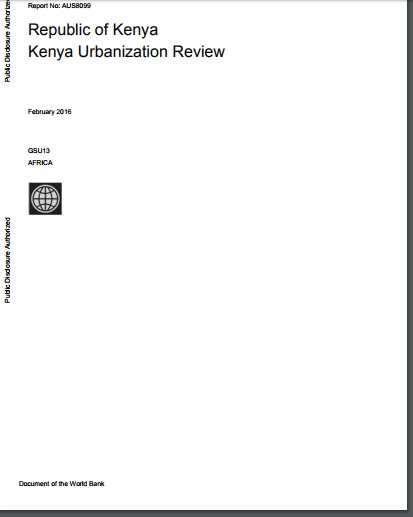Resource information
The story of urbanization in Kenya should be one of cautious optimism. As an emerging middle-income country with a growing share of its population living in urban areas and a governance shift toward devolution, the country could be on the verge of a major social and economic transformation. How it manages its urbanization and devolution processes will determine whether it can maximize the benefits of its transition to a middle-income country. This is in part because no country has reached highincome status without urbanization, and in part because the devolution of state authority, resources, and functions may result in more equitable and efficient governance and services. Kenya has seen positive economic growth in tandem with increasing rates of urbanization, but the country has not yet experienced an economic transformation. Economic growth has created a growing middle class, but poverty reduction has been less than expected. To tackle poverty requires policymakers to look across many sectors, issues, and locations. There are needs in rural areas and marginalized counties which merit attention as highlighted in other Bank studies. This comprehensive report focus on cities where today majority of urban residents live in informal conditions, with poor access to basic networked services and an increasing share of informal sector work. The country’s ambitious experiment in devolution should hold great promise and comes at an important period in the economic and urban transformation. But aspects of the process may weaken urban centers at a time when they need to be strengthened. On balance, Kenya still has an opportunity to leverage urbanization to drive economic growth. It is in the early stages of urbanization, and evidence suggests that cities can drive economic development— especially where they are developed through a “systemof-cities” approach and where devolution empowers counties—a second tier of government—to develop strong urban centers. This Kenya Urbanization Review takes a deep look at Kenya’s urbanization process. It provides initial policy options in several key areas including housing and basic services, land use and transport, planning, subnational finance, and local economic development. These are not the only areas of concern for Kenya’s urban practitioners and policy makers. But they were identified as areas for more in-depth study during initial stakeholder consultations and as key priorities in consultations with government experts. It is hoped that the Review will serve to raise understanding of the important opportunity that urbanization presents for the country, informing policy makers and interested parties alike and expanding dialogue on Kenya’s urbanization. The review is laid out in three parts. The first looks at some of the demographic, economic, and spatial trends of Kenya’s urban areas (Chapter 1). The second describes the challenges or threats to a smooth urban transition: large, growing informality and inequality within and between urban areas, in three categories of access (Chapters 2, 3, and 4). The third examines the modern institutions needed to address the challenges head on and to ensure that Kenya’s cities have the opportunity to serve as true drivers of economic growth (Chapters 5, 6, and 7).


